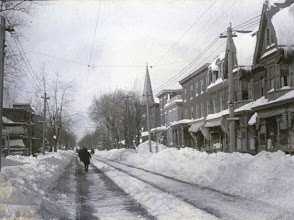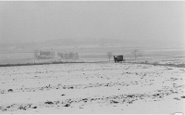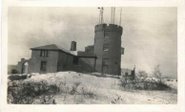Winter '11 / '12 - The North Atlantic Oscillation and Sea Surface Temperatures
Conventional wisdom states it's next to impossible to skillfully forecast the state of the North Atlantic Oscillation (NAO) more than a week to ten days in advance.
Even that's a stretch given the generally low correlation between forecast and observed conditions. The current ten-day and 14 day correlations are 0.72 and 0.55...respectively which means the forecast explains 52% and 30% of the NAO's variability. There's some skill at ten-days...not so much at 14.
The UKMET Office produced an NAO winter-season forecast up until the fall of 2009. It was based on sea surface temperature anomalies (SSTA) in the mid-Atlantic Ocean. They claimed a 67% skill level. It's no longer published...possibly b/c of recent controversies and adverse publicity surrounding their 'failure' to forecast the severity of the past two winters.
 |
| Image courtesy UKMET Office |
"By taking the observed SST anomaly for May and calculating how it projects onto the predictor pattern we (ed: UKMET Office) can make a prediction for the winter NAO.---
"If the projection is positive (i.e., the anomaly pattern looks similar to the predictor pattern shown above) then the prediction is for a positive winter NAO.
"Conversely, if the observed May SST anomaly projects negatively onto the predictor pattern (i.e., it looks like the reverse of the predictor pattern) then we (ed: UKMET Office) would predict a negative NAO."
So...where were SSTAs lurking in the Atlantic this May?
What...if anything...might they predict about the state of Winter '11 / '12 NAO?
If you're rooting for Team NAO to come through and deliver a halfway decent winter...then you can't be happy about the positive-negative-positive SSTA pattern along the northwest rim of the Atlantic Ocean last May.
The observed pattern predicts low 500mb heights will prevail over Greenland this winter and therefore...a predominantly positive NAO.
---
More about SSTAs and the NAO during winter in a few days.


































